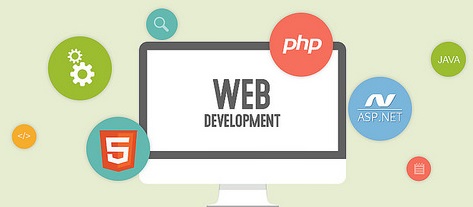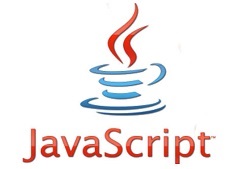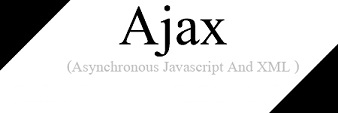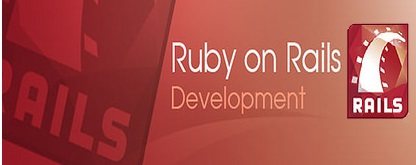10 great technologies for building web applications
Choosing the right technology for your project ensures successful estimation and completion. Clients are happy because the project stays well within the budget and TTM (Time to market) is fast. The best technology for the job makes the coding more easier, with less effort from the developer’s side and the quality of project improves greatly. So at the onset of any project, it is imperative to understand the project, and its requirements, identity the core modules of the solution to be provided, and research. Researching well before any project would help you move the project faster. Stackoverflow is a good place to do your research because you can meet with a number of fellow developers who can clear any doubts that you have.
In this article, we will discuss some of the best client side and server side scripting technologies used in building web applications.
Client side scripting
The browser usually does the client side scripting, while the processing takes place on the user’s computer. The source code moves from the web server to the end user’s device and functions in the browser. An internet connection is required for this.
1. HTML (HyperText Markup Language)
HTML is the most basic building block of the web. HyperText means connecting webpages to one another, either within the website or between other websites. HTML describes and defines the content of the webpage, and uses markup language to annotate text, images, and other content that is to be displayed. The markup consists of many elements like <head>, <title>, <body>, <header>, <footer>, <article>, <section>, <p>, <div>, <span> and <img>.
2. CSS (Cascading Style Sheets)
CSS or the Cascading Style Sheets gives freedom to the web designer to change colours, fonts, transitions and animations on the web. It also helps in loading the web pages faster, and makes the pages aesthetic and beautiful as well. The two main CSS precompilers are LESS and SASS. LESS helps in extending the CSS language y adding more variables, mixing, functions and other techniques that helps you perform CSS functions in a more maintainable and extendable manner. LESS runs within the node, and in the browser. CSS describes the HTML elements to be displayed and plays an important role in making the webpages presentable. SASS, compatible with all versions of CSS adds beauty and power to the basic language. Additionally, you can use variables, mixins, inline imports, nested rules and more with a fully CSS compatible syntax.
3. JavaScript
Javascript or JS is a dynamic, object based, free-form, multiparadigm, and interpreted programming language that lets you make interactive web pages. It also helps you update live webpages seamlessly. As the script is in HTML, your scripts are transparent, and anyone can see and copy them anytime. There are many frameworks like Angular, React, Ember, BackboneJS, Knockout JS, Skel, Aurelia.js and Vue.js and they help you build complex single page, web applications.
However, if you don’t want to use any frameworks, you can still use pure Javascript.
4. Ajax (Asynchronous JavaScript and XML)
AJAX is the short for Asynchronous JavaScript And XML, it can send and receive information in a number of formats including text files, JSON, XML, HTML. There is a browser built XMLHttp Request object (to request data from a web server) and HTML DOM and JS to display or use the data. AJAX is a fairly new technique that helps you create stunning, dynamic, interactive and asynchronous Web applications. It uses CSS for presentation, XHTML for content and Javascript for dynamic content display. It is user friendly and the process is seamless, meaning the user would never even realize that anything got transmitted to the server when he fills forms and presses the submit button.
5. jQuery
As the name suggests, jQuery is a JavaScript Framework Library that is commonly used in Ajax. It makes the client side scripting of the HTML very easy, thanks to its enhanced feature rich capabilities and an easy to use API that runs across multiple browsers, while making things like HTML document traversal, manipulation, animation and event handling a piece of cake.
Server side scripting
Server side scripting, providing customized interface for the user is mainly about employing scripts on a web server. It gives off results customized for client’s request to the website.
6. PHP
PHP is the most popular and hence commonly used Server Side Scripting language like ASP and JSP. As it is open source and free to use, you can easily download it and use it at any time. PHP runs on Windows, Unix & Linux, supports databases like MySQL, Oracle, PostgreSQL, and is compatible with almost all the servers.
For cross-platform services, you can combine PHP with MySQL. And being a powerful language, your requirement for a dynamic and interactive website will be well met with PHP. Several web hosting providers do not support JSP, but almost all of them supports PHP.
7. Python
A powerful and easy to learn programming language, Python comes with high-level data structures, but was initially meant to be a full stack programming language . However, it is also being used as a server side scripting language, even though it is not as hugely popular as PHP. It comes with extensive and detailed documentation like PHP, and comes with a huge and friendly developer community that makes the process of learning and working with PHP and Python very easy.
8. Ruby on Rails
Ruby on Rails, an all purpose scripting/programming language is also similar to python and PERL. It is also noted for the extensive Javascript libraries Prototype and Script. Ruby on Rails is highly productive, reasonable quick, and feature-rich. For startup Ruby on rails would be a good option because it gets you quick from the idea to deployment phase.
Yes, it is not so quick when you look at the speed at which it can handle individual requests. So when the requests grow, you will have to probably rewrite in something faster.
9. ASP
ASP is a unique server side scripting language because it lets you choose the syntax you want to develop in. The popular scripting languages for ASP are VB Script and JScript, and sometimes even PerlScript.
10. ASP.NET
ASP.NET is Microsoft’s most popular scripting language. It uses the .NET framework and is written in languages like C# and VB.NET. The ASP engine reads the film executes the codes within the file, with the results directed towards the browser.
Of course, there are plenty of other server side and client side frameworks, databases and framework used in the web app development. The final decision is of course based as per the discretion of the developer team and project requirement.
- Top 10 Web Application Development Frameworks
- 14 Technologies Every Web Developer Should Be Able to Explain
Flickr.com / Limelight Leads, slavik_V, james gonzalez, yovidj, Karun jaraslertsuwan, Matthew Batchelder, Erick MK, code brahma, Arjen van Silfhout











